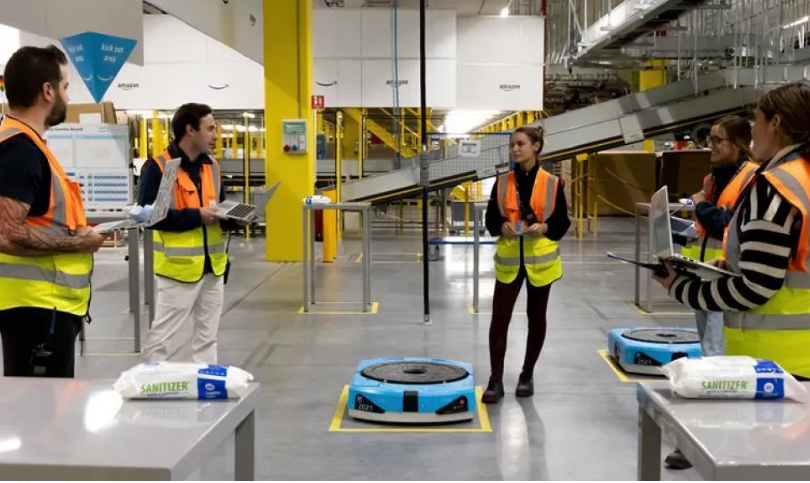Business
Adding Value in Business Operations with Online Invoice Generators

In the dynamic world of business, efficiency and accessibility are key drivers of success. One tool that has significantly impacted these areas is the invoice generator. This software solution not only streamlines financial operations but also enhances digital marketing efforts, making it an indispensable asset for modern businesses. Traditionally, invoicing was a cumbersome process, often involving manual data entry, paper trails, and a high risk of errors. Businesses had to dedicate substantial resources to manage their billing processes, which could lead to delays and financial discrepancies. The advent of digital technology has revolutionized this aspect of business operations, with invoice generators leading the charge.
What is an Invoice Generator?
An invoice generator is a software application designed to automate the creation, management, and tracking of invoices. These tools offer a range of features, including customizable templates, automatic calculations, and integration with accounting software. By automating these tasks, businesses can reduce the time and effort required to manage their invoicing processes.
Key Features and Benefits
- Efficiency and Time-Saving: One of the most significant advantages of invoice generators is the time saved. Automated systems can generate invoices in seconds, compared to the hours it might take to create them manually. This efficiency allows businesses to focus on core activities rather than administrative tasks.
- Accuracy and Reduced Errors: Manual invoicing is prone to human error, which can lead to financial discrepancies and strained client relationships. Invoice generators minimize these risks by automating calculations and ensuring that all necessary information is included.
- Professionalism and Customization: Invoice generators often come with a variety of templates that can be customized to reflect a company’s branding. This not only enhances the professional appearance of invoices but also ensures consistency in communication.
- Integration with Accounting Systems: Many invoice generators can integrate seamlessly with existing accounting software, providing a unified platform for financial management. This integration simplifies the tracking of payments, outstanding invoices, and overall financial health.
- Enhanced Security: Digital invoicing solutions offer enhanced security features, such as encryption and secure storage, protecting sensitive financial information from unauthorized access.
Impact on Digital Marketing
Invoice generators are not just about streamlining financial operations; they also play a crucial role in enhancing digital marketing efforts. Here’s how:
- Data-Driven Insights: Invoice generators can provide valuable data on customer purchasing patterns, payment histories, and sales trends. This information can be leveraged to create targeted marketing campaigns, improving customer engagement and conversion rates.
- Improved Customer Experience: By automating invoicing, businesses can ensure timely and accurate billing, which enhances the overall customer experience. Satisfied customers are more likely to engage with a brand’s digital marketing efforts and become repeat buyers.
- Brand Consistency: Customizable invoice templates allow businesses to maintain brand consistency across all customer communications. This consistency reinforces brand identity and trust, which are critical components of successful digital marketing.
- Resource Allocation: The time and resources saved through automated invoicing can be redirected towards digital marketing initiatives. Businesses can invest more in content creation, social media engagement, and other marketing strategies that drive growth.
- Scalability: As businesses grow, the volume of invoices increases. Invoice generators can easily scale to accommodate this growth, ensuring that financial operations remain efficient and marketing efforts are not hindered by administrative bottlenecks.
Beyond these benefits, they also provide valuable insights and resources that can enhance digital marketing efforts. As businesses continue to navigate the complexities of the digital age, tools like invoice generators will remain essential for driving success and growth.
Business
Amazon Expands Job Creation in Europe’s High-Unemployment Regions, Invests Billions in Cloud and Infrastructure

Amazon has announced significant investments aimed at driving job growth across Europe’s high-unemployment regions, as part of its broader economic impact strategy. The announcement coincides with the release of the company’s 2024 Europe Impact Report, which revealed Amazon contributed over €41 billion to Europe’s GDP, including €29 billion to the EU27 alone.
The figure is comparable to the entire GDP of Latvia, underscoring Amazon’s growing footprint across the continent. “Our economic impact in Europe goes far beyond the numbers,” said Mariangela Marseglia, Vice President of Amazon Stores EU. “We’re creating opportunities where they’re needed most, supporting local economies, and helping to revitalize communities across the continent.”
Amazon currently employs over 150,000 people across the EU, with more than 90,000 jobs located in areas suffering from above-average unemployment, according to Eurostat. One of the most striking examples is in France’s Hauts-de-France region, where unemployment is 8.7%. There, Amazon has created over 6,000 jobs in the past decade, including 2,600 permanent roles at its Lauwin-Planque fulfillment center.
A recent survey revealed 71% of locals view Amazon’s presence positively, and 94% highlight job creation as a key benefit. Research by Ipsos further supports this trend, showing that 81% of residents near Amazon logistics centers have seen job opportunities increase. More than half report financial improvements that influence long-term life decisions like homeownership or starting a family.
Amazon has also confirmed it does not use zero-hour contracts in any European countries where they are legally permitted, maintaining consistent employment standards across the region.
In terms of long-term investments, Amazon poured over €55 billion into infrastructure and workforce development across Europe in 2024 alone, with €38 billion going to EU member states. Since 2010, total investment has surpassed €320 billion.
Future plans heavily involve Amazon Web Services (AWS), which continues to expand across major European tech hubs. In Germany, Amazon plans to invest €8.8 billion in Frankfurt through 2026, supporting 15,200 jobs and contributing €15.4 billion to the country’s GDP. In the UK, an £8 billion (€9.5 billion) investment will support 14,000 jobs annually through 2028. France is set to benefit from €6 billion in cloud infrastructure investment by 2031, projected to generate €16.8 billion in GDP and support over 5,200 jobs annually.
As Amazon diversifies its European operations, these strategic investments aim to foster employment, boost regional economies, and solidify its presence as a key driver of growth and innovation across the continent.
Business
European Steel Stocks Slide as Trump Tariff Hike Boosts U.S. Rivals

Shares of leading European steel producers dipped on Tuesday as markets reacted to former U.S. President Donald Trump’s plans to double tariffs on steel and aluminium imports, escalating concerns of renewed global trade tensions.
Trump’s proposal, which would increase existing tariffs from 25% to 50%, is set to take effect on June 4. The move has already jolted steel markets, sending European steel stocks lower while fueling gains among American producers. Trump defended the decision on his social media platform, Truth Social, declaring the measure a boost for U.S. industry: “Our steel and aluminum industries are coming back like never before. This will be yet another BIG jolt of great news for our wonderful steel and aluminum workers.”
European investors appeared less optimistic. German steelmaker Thyssenkrupp saw its shares fall 0.5% on the Frankfurt Stock Exchange on Tuesday, while Salzgitter AG slipped 0.4%. ArcelorMittal, one of the world’s largest steel manufacturers, dropped 1.1% on the Euronext Amsterdam. Austria’s Voestalpine AG also registered a 0.8% decline in Vienna.
Conversely, U.S. steel stocks rallied sharply following the announcement. Cleveland-Cliffs surged 23.2%, while Nucor and Steel Dynamics rose 10.1% and 10.3% respectively by Monday’s close, as investors bet on improved prospects for domestic producers shielded from international competition.
Despite the short-term boost for U.S. steel firms, the tariff hike has sparked fresh concerns about the broader economic consequences. Economists warn that the protectionist approach could backfire, raising costs for U.S. industries that rely heavily on imported aluminium and steel — particularly in the automotive and construction sectors.
Felix Tintelnot, professor of economics at Duke University, said the uncertainty surrounding such policy shifts makes long-term investment risky. “We’re talking about expansion of capacity of heavy industry that comes with significant upfront investments, and no business leader should take heavy upfront investments if they don’t believe that the same policy [will be] there two, three, or four years from now,” he told TIME.
Tintelnot further cautioned against setting trade policies unilaterally, emphasizing the need for a predictable economic framework. “Regardless of whether you’re in favour [of] or against these tariffs, you don’t want the President to just set tax rates arbitrarily, sort of by Executive Order all the time,” he said.
As global markets assess the potential fallout, the European steel industry may be bracing for more volatility, while U.S. manufacturers weigh the longer-term impact of a possibly inflationary policy shift.
Business
European Markets Slide as U.S.-China Tariff Tensions Escalate

European stock markets slipped on Monday afternoon as renewed trade tensions between the U.S. and China unsettled investors, reigniting fears of a prolonged global trade dispute.
By 13:05 CEST, all major European indexes were trading in negative territory. The EURO STOXX 50 had dropped 0.68%, Germany’s DAX was down 0.48%, and France’s CAC 40 had fallen by 0.63%.
The downturn followed comments from Beijing accusing the United States of “severely violating” the terms of their recent trade agreement, prompting concerns of a fresh round of retaliatory measures. Investors were also reacting to U.S. President Donald Trump’s announcement that tariffs on steel and aluminium imports would be doubled from 25% to 50% starting Wednesday.
“Donald Trump has upset markets once again,” said Russ Mould, investment director at AJ Bell, in a note shared with Euronews. “Doubling import taxes on steel and aluminium, and aggravating China once again, mean we face a situation where uncertainty prevails. Trump’s continuous moving of the goalposts is frustrating for businesses, governments, consumers, and investors.”
Market sentiment soured across Europe and Asia, with futures suggesting a similarly weak open for Wall Street later in the day. In response to rising uncertainty, investors turned to safe-haven assets, giving gold a boost.
U.S. Market Outlook Mixed
While U.S. equity markets ended May relatively flat, major indices posted solid gains over the month, lifted by earlier optimism around easing trade tensions. However, that sentiment is now under pressure.
“The latest broadsides from the White House were primarily directed at China and the EU, with both threatening a response in kind to any further tariff hikes,” said Richard Hunter, head of markets at Interactive Investor.
Still, there were some encouraging economic signals. The Federal Reserve’s preferred inflation gauge, the Personal Consumption Expenditures index, came in lower than expected, while consumer sentiment surprised on the upside. Analysts caution, however, that these may be temporary reprieves.
Looking ahead, attention is turning to U.S. non-farm payroll data due at the end of the week. Economists forecast 130,000 new jobs added in May, down from 177,000 the previous month, with unemployment expected to hold at 4.2%.
Despite recent gains, U.S. markets remain fragile. Year-to-date, the Dow Jones is down 0.6%, the Nasdaq 1%, while the S&P 500 has managed a modest 0.5% rise, bolstered in part by strength in large-cap tech stocks.
Asian Markets Also Weigh Trade and Geopolitics
Asian markets also came under pressure. The Hang Seng index fell amid renewed concerns over U.S. tariffs and geopolitical uncertainty stemming from ongoing Russia-Ukraine tensions.
Mainland China’s markets were closed for a public holiday, but investors expect potential losses upon reopening, particularly after recent data showed further contraction in factory activity.
With trade tensions heating up again, global markets are bracing for a volatile start to June.
-

 Business1 year ago
Business1 year agoSaudi Arabia’s Model for Sustainable Aviation Practices
-

 Business1 year ago
Business1 year agoRecent Developments in Small Business Taxes
-

 Politics1 year ago
Politics1 year agoWho was Ebrahim Raisi and his status in Iranian Politics?
-

 Business11 months ago
Business11 months agoCarrectly: Revolutionizing Car Care in Chicago
-

 Business11 months ago
Business11 months agoSaudi Arabia: Foreign Direct Investment Rises by 5.6% in Q1
-

 Technology1 year ago
Technology1 year agoComparing Apple Vision Pro and Meta Quest 3
-

 Politics1 year ago
Politics1 year agoIndonesia and Malaysia Call for Israel’s Compliance with ICJ Ruling on Gaza Offensive
-

 Sports10 months ago
Sports10 months agoKeely Hodgkinson Wins Britain’s First Athletics Gold at Paris Olympics in 800m


















